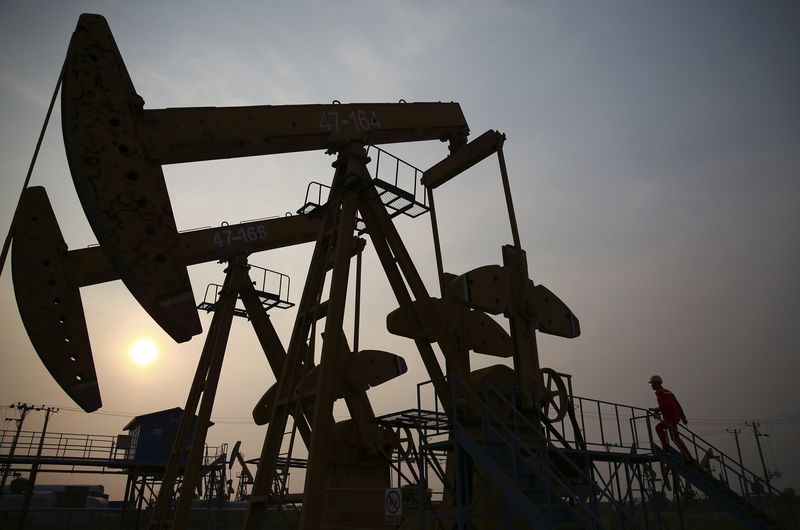(Repeats to additional subscribers, with no change to text)
By Swetha Gopinath
Dec 3 (Reuters) - U.S. crude prices were hovering just above $40 in early Asian trading on Thursday, after dropping more than 4 percent a day earlier, on an unexpected rise in U.S. stockpiles that is compounding a global supply glut.
U.S. crude CLc1 was trading at $40.23 per barrel at 0005 GMT on Thursday, up 29 cents from its last settlement, but down nearly 14 percent since the start of November.
Crude inventories USOILC=ECI rose for the tenth straight week, climbing 1.2 million barrels in the week to Nov. 27 in contrast to analysts' expectations of a decrease of 471,000 barrels, data from the U.S. Energy Information Administration showed on Wednesday.
"The market was expecting a modest rundown in U.S. crude oil inventories last week, but API and EIA have reported rises of 1.64 and 1.18 million barrels, respectively, this week," ANZ bank said on Thursday.
The inventory build will add to an oversupply that has caused a 60 percent price fall since June 2014. Oil production already exceeds demand by 0.5-2 million barrels per day.
Warmer-than-usual weather in the northeast United States, a major market for heating oil, and a shale oil boom in the country are contributing to the rise in stockpiles.
Moreover, the Organization of the Petroleum Exporting Countries (OPEC) is widely expected to keep its high output unchanged at a meeting in Vienna this Friday.
"Reports were the majority of OPEC members support a production cut, except for the dominant supplier Saudi Arabia," ANZ said.
Oil prices briefly turned positive on Wednesday after Tehran's oil ministry news agency Shana said that a majority of OPEC members agree on output cuts, but the report also pointed out that OPEC's top producer Saudi Arabia was not supportive of the reduction.
A strong U.S. dollar, which hit its highest against the euro in more than seven months on Wednesday, also weighed on oil prices.
A strong dollar is a negative for oil markets as it makes greenback-dominated contracts such as crude futures more expensive for holders of other currencies.
